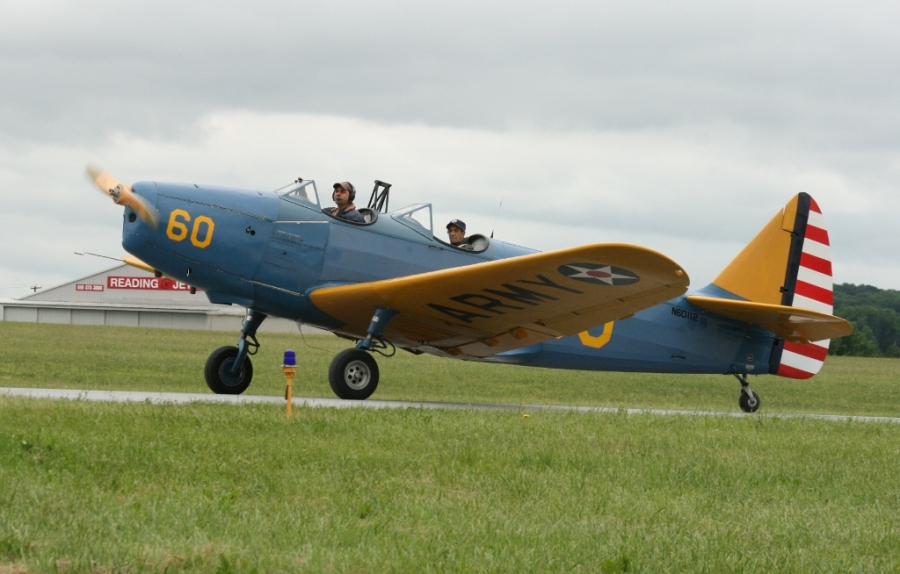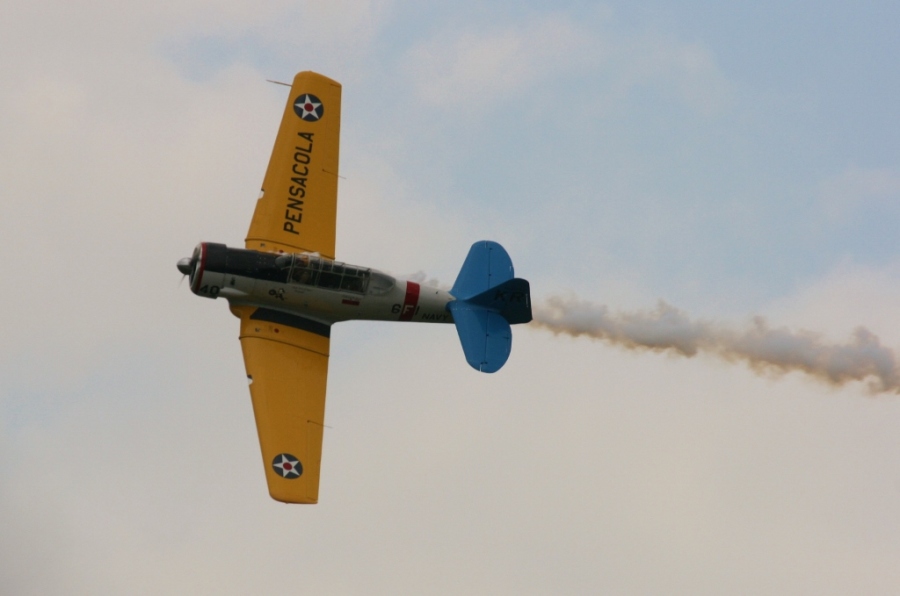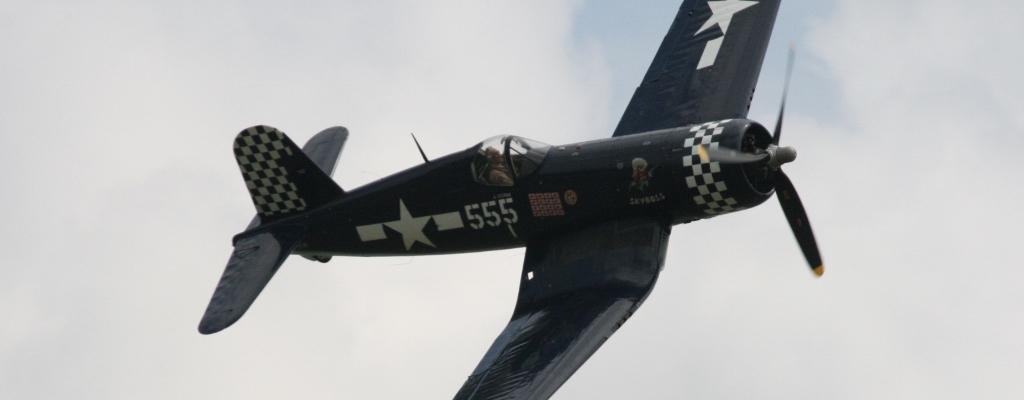The Mid-Atlantic Air Museum in Reading, Pennsylvania hosted their annual World War Two Weekend on June 7th to 9th, 2013. What an event with many classic Warbirds from that era taking to the skies! This blog is part 2 of an overview of the event specifically for the smaller aircraft including fighter planes that flew or were on static display (my previous blog, part 1 was on the bombers such as “Fifi” the Boeing B-29 Super Fortress and transports that flew at the show along with a vast array of military reenactors on the ground). A number of these aircraft were giving joy flights throughout the day if you had the cash!

Smaller combat aircraft at the show included a number of former US Navy ones such as the mighty Vought F4U Corsair fighter with its distinctive inverted gull wings (designed for use on aircraft carriers, this shape allowed for a shorter and stronger undercarriage to accommodate heavy deck landings), a Douglas SDB Dauntless dive bomber, a Grumman TBM-3 Avenger torpedo bomber and a Curtiss SB2C Helldiver dive bomber (first time I had seen one fly). All of these aircraft flew together at one stage with an old enemy amongst them. A replica of the Japanese Aichi D3A Type 99 “Val” dive bomber which was actually made from a North American T-6 Texan for the 1970 movie “Tora! Tora! Tora!”





The USAAF was not forgotten with 3 North American P-51D Mustangs taking flight. Regarded as one of the best fighters of World War Two, it is always great to see and hear them fly! A Supermarine Spitfire and Curtiss P-40 Warhawk were also meant to be on display but were not present when I was there (they may have arrived on the third day which I did not attend).



There were also many training aircraft such as the Boeing Stearman, Fairchild PT-19, PT-22, PT-23A and PT-26, Consolidated Vultee SNV-1 Valiant and numerous North American T-6 Texan’s (also known as a Harvard in Commonwealth countries and SNJ in the US Navy). Many of these trained vast numbers of pilots during the war and it is really interesting to see how aircraft design changed and improved from the 1930’s to the 1940’s (from biplanes with open cockpits and fixed undercarriage; to monoplanes with a canopy and retractable undercarriage amongst many other changes).






A modified Bucker Jungmeister performed some nice aerobatics in the sun and there were many liaison and civilian aircraft on display. These included a Piper Supercub, an Aeronca L-16 Grasshopper, 2 Aeronca L-3 Defenders, an Interstate L-6 Cadet, a Stinson L-5 Sentinel, a Piper L-4 Grasshopper and 2 Taylorcraft L-2 Grasshoppers. It is interesting that a lot of these aircraft shared the same name!





In addition the museum had on display their long-term restoration project. A Northrop P-61 Black Widow night fighter which they plan to restore to flight. This type was first introduced into service in 1944 and was used in all main theatres of operation in World War Two, with the last retired in 1954. That will be something to look forward to as it is only one of four left today and will also be the only one to be flight capable when it is completed.

This was my first time at the World War Two Weekend. It was a great event that was well-organized and very entertaining. If you are ever in Pennsylvania in June I thoroughly recommend attending this weekend event.

[…] If you are ever in Pennsylvania in June I thoroughly recommend attending this weekend event. Part 2 of this blog features the fighters and other smaller aircraft that flew or took part as a static […]
LikeLike